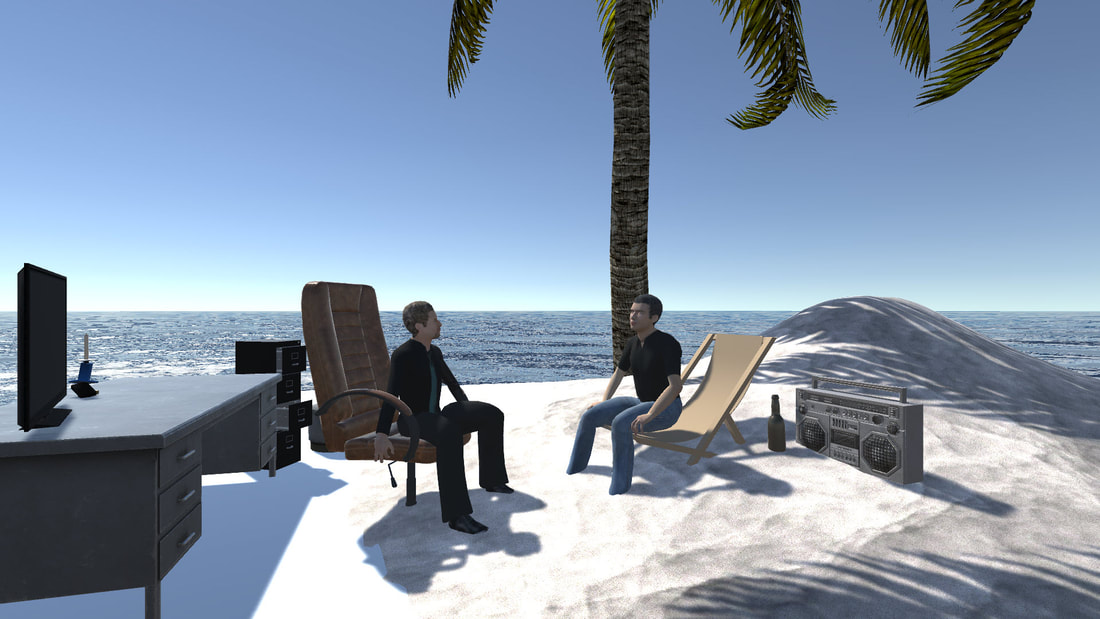|
Introduction
It's the first day of 7-in-7 project, which is about completing one project a day, for 7 days. Following my Thesis review with Kyle Li, I realized that I didn't know my target audience (Generation Z) as well as I had thought. So, I have dedicated a day to understanding who they are (primarily in the United States) and what kind of stories would work best for my thesis. This project is my interpretation of the 992 user responses that the New York Times had collected in 2018 from GenZ in the US. I found this resource diverse and a good sample set to study. It includes teens and early adults from different ethnicities and cultural backgrounds. Contextualizing these responses, I have grouped them in 5 categories:
0 Comments
In this post, I have updated my practice of using images for photogrammetry.
Last time, I had used a turntable for taking images. This time, I have moved my camera position relative to the scene/object. That helps the software get a perspective on the view. I used an iPhone camera to take pictures. I have created 2 models - the view from my apartment window, and a mini-Rubik's cube. Both the models have come out better than the last time. What's interesting in the apartment window is that the software could estimate the distance of the objects visible through the window, and created a depth map of that.
Introduction
This project is a conversation between two humans - same person but different ideologies. It presents an alternate outlook of the future. While the world is designing automation tools, machine learning algorithms, and robots to simplify our lives, this interaction explains that humans are the robots of the future - they are not humans anymore. I want to highlight that in the process of being productive, we are giving away the aspect of our lives in which we feel free, error-prone, and realistic. We are not supposed to act like machines because we are humans.
This time, I have used a Agisoft Metashape software to render images into 3D meshes.
The renders don't look anywhere close to the real image, but that may have to do with how I took pictures. The final rendered texture has a very different aesthetic from the original. I like how the texture map has come out. The two 3D objects that I scanned were a box of Pringles and a 3D modeled cube keychain. Concept Statement
I want to make GenZ conscious about their privacy around the use of immersive technologies. I want to highlight the data collection mechanisms which are aimed at behavioral modification. I want to present different versions of the same conversation by augmenting each with immersive technology. I believe that a sequence of these experiences would make them compare and analyze their transition to technology and how it is altering their behavior.
This post contains the 3D models that I scanned using a handheld device.
Since the hardware is primitive, the quality of the scans is not great.
Why is privacy so important to me?It isn’t. Not really. I am more concerned about being a conscious individual. We are in a rat race, continuously trying to optimize, simplify, and adopt whatever comes out next. I want to stop momentarily and think about my actions as I lead that path.
Today, I was feeling musical. So, inspired by the film Abominable, I created my own piece using strings and piano.
The rhythm rises in complexity as the strings increase from one violin to two, and then get supplemented by violas, cellos and basses. The tone from the grand piano guides the pace of the piece, gradually fading out at the end. It was recorded and edited on Garage Band. In this post, I have created a test environment for motion capture.
I have rigged a 3D model of Big Hero 6 (found online) in Maya, and then imported it in Unity. Then, I applied the MoCap data that I had recorded inside a studio and applied it to the model. Note: I forgot to fix the glitches during capture, so the video seems buggy. But, the test works! What is it that keeps us driven every day? What makes people committed to working 10 hours a day, seven days a week? Why do parents push their children to go to school? Why is everyone pacing towards the next big thing?
Because they want to create a name for themselves. The world is built around creating and valuing a person’s social identity. Money, power, status – all help us shape our identity. And so, it’s important to us. It matters what others think of us. It matters what image we create about ourselves. It matters that we are seen in the way we want to be seen. |







